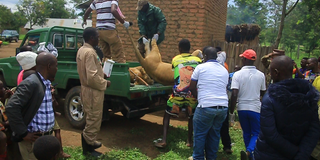Electrocution of lions raises many questions

What you need to know:
The issue:
Wildlife
Our view:
... the essence of co-existence is what authorities can turn to in the face of shrinking spaces for both wildlife and human economic activity
At least three lionesses were on Tuesday found dead in the environs of Queen Elizabeth National Park.
Authorities suspect the pride of wildlife on the continent was electrocuted by the perimeter electric fencing mounted by Irunga Hotel in Kigabu Village in Katunguru, Rubirizi District.
The incident, which lays bare the tragic scale of human-wildlife conflict for space around national parks and other protected areas, couldn’t have been grave. But this must also be a big eye-opener and force review of several policy decisions that guide the protection of wildlife and other endangered species in the country. Yes, Uganda Wildlife Authority (UWA) has already worked up the usual ‘passing cloud’ in the form of promising to investigate the circumstances under which three lionesses died near.
Even as UWA promised to carry out a postmortem to ascertain the exact cause of death of the three queens of the jungle, most Ugandans would have already noticed that this is not the first time human-wildlife conflict is robbing the economy of a valuable foreign exchange earner.
In March 2021, six lions were found dead at Ishasha sector of the same national park in suspected poisoning. UWA said at the time that the carcasses were found with most of their parts missing. Eight dead vultures were also found at the scene, which pointed to possible poisoning.
Added to the Tuesday tragedy brings the total number of lions lost at Queen Elizabeth National Park to eight in slightly over a year.
It is ironical that a hotel that relies on tourism would be the death of wildlife, one of the biggest attractions for the tourists into Queen Elizabeth National Park. As UWA runs about with post-mortem, there is an urgent need for stakeholders to revisit the policies that guide the framework upon which human settlements and economic activities are allowed in and around protected areas.
Over the years, the country has seen a spate of clashes between wildlife and humans with several animals and birds often bearing the brunt of human encroachment. These spaces originally were for the wildlife. Any human activity in and around such protected areas must be treated in the same vein a person would treat encroachment on their ancestral land.
However, the essence of co-existence is what authorities can turn to in the face of shrinking spaces for both wildlife and human economic activity. An inquest into this latest tragedy must exhaust how the hotel came to erect the alleged electric fencing in an area with protected species. Was the alleged electric fencing part of the design upon which the licence to operate in the area was issued?




